Three days. More than 90 speakers. A city reawakened by imagination.
The Singapore AF Conference 2025, which opened this year’s Archifest with bold intellectual force, didn’t just push boundaries, it redrew the map of what architectural thinking could mean in a time of rapid change. Themed “Don’t (Just) Think Like An Architect!”, this year’s edition was about architecture as culture, connector, and catalyst. About how design can shape mindsets just as much as it shapes skylines.
Helming this year’s programme as Festival Director was Rene Tan, co-founder of RT+Q Architects. Known for his interdisciplinary curiosity and poetic design sensibilities, Tan infused the festival with personal conviction and quiet charisma. Almost every speaker who took the stage was in some way connected to him, either as a friend, classmate, collaborator, or mentor. This made the conference feel not only intentional but intimate. He was joined in this bold endeavour by his RT+Q team: Jonathan Quek, Koh Sock Mui, and Koh Kai Li, alongside SIA President Tiah Nan Chyuan. Together, they curated a programme that challenged both the profession and the public to reimagine how design could be more inclusive, more human, and more deeply connected to the communities it serves.
As Tan remarked, the theme “Don’t (Just) Think Like An Architect!” was not simply a provocation—it was “an invitation to embrace a mindset” that “challenges traditional mindsets and invites new unconventional ways of thinking in architecture.”
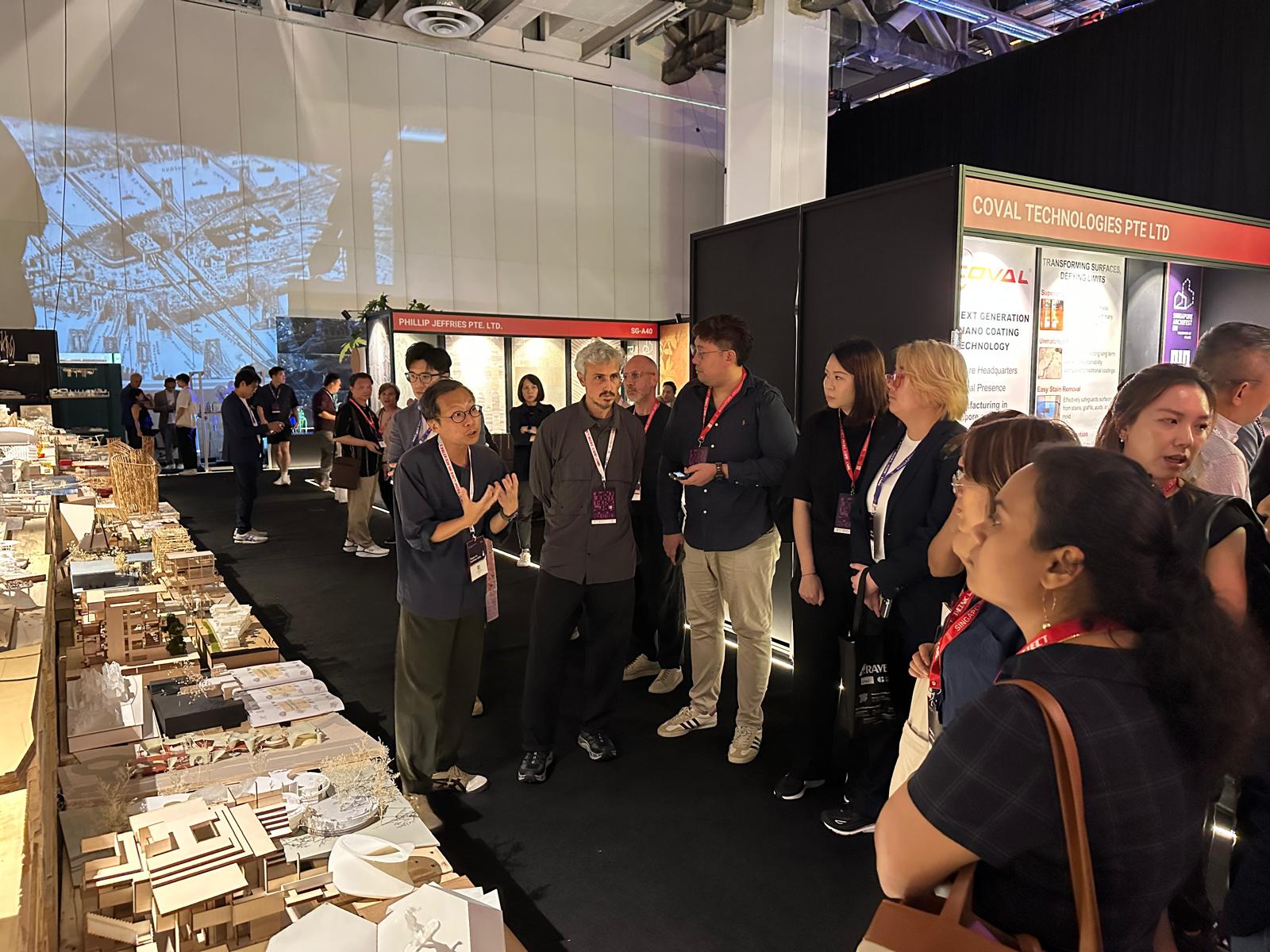
At the Singapore AF Conference 2025, educators Chih Wen and Federico Ruberto showcased innovative student projects from NUS—spotlighting the next generation’s bold visions for architecture and the evolving role of design in shaping tomorrow’s cities. Photo: SIA
His goal, he said, was for “everyone—not just built environment professionals or design enthusiasts—to understand that architecture is for them and to think more deeply about the impact of our work on the environment and communities.” It was a call to action, and the festival answered with clarity, colour, and a chorus of diverse voices.
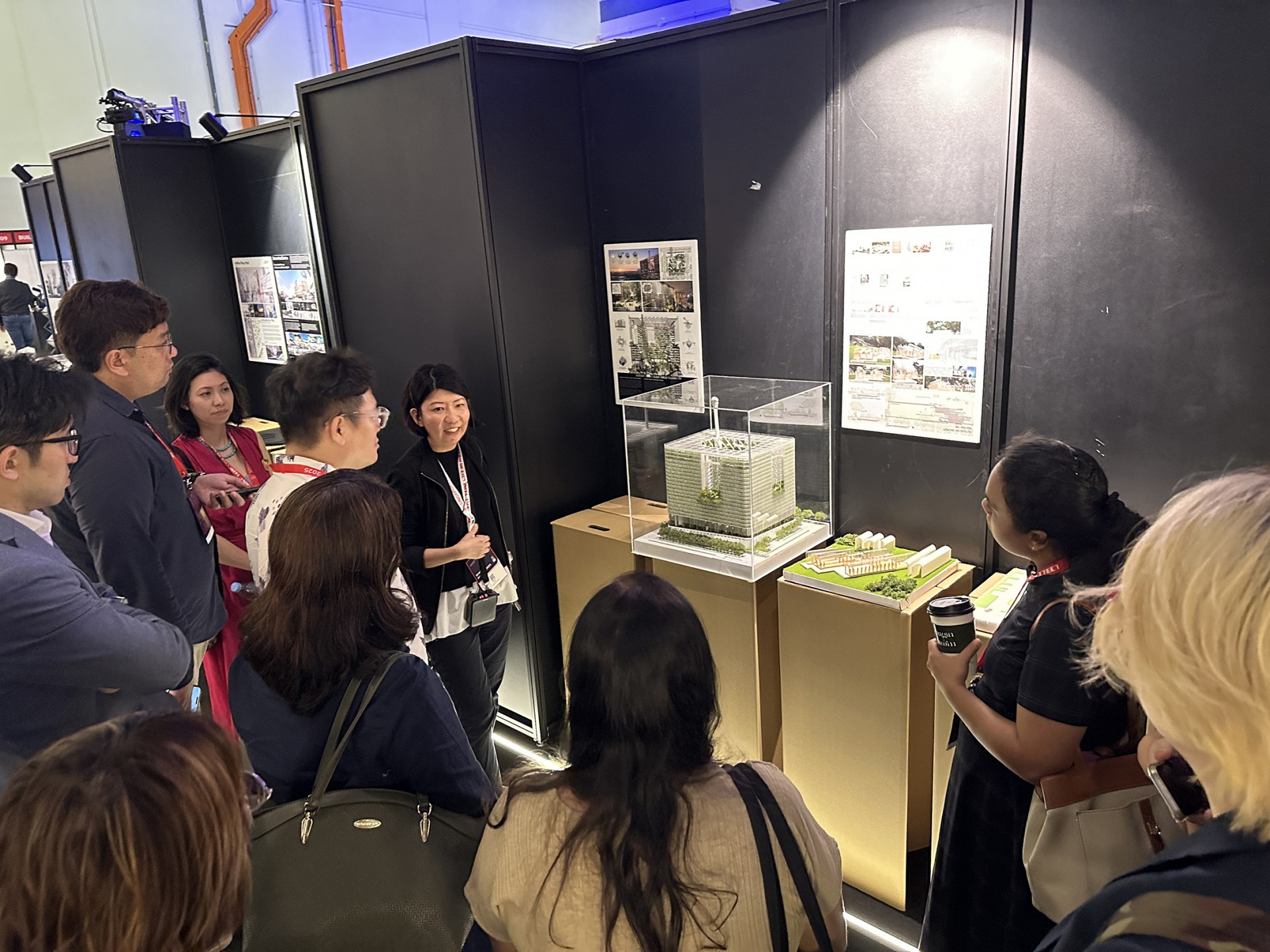
Alina Yeo of WOHA sharing her unbuilt project. Photo: SIA
Architecture in Dialogue
Among the towering names was Riken Yamamoto, whose work continues to ask how buildings can serve society, not just clients. In one of the most quietly powerful moments of the conference, Yamamoto shared The Circle at Zurich Airport, a sprawling yet porous development that combines hotel, retail, office, and event spaces with the transparency and social fluidity he’s become known for. His talk wasn’t just about design; it was about trust, and how architecture can act as an instrument of openness in increasingly guarded urban environments.
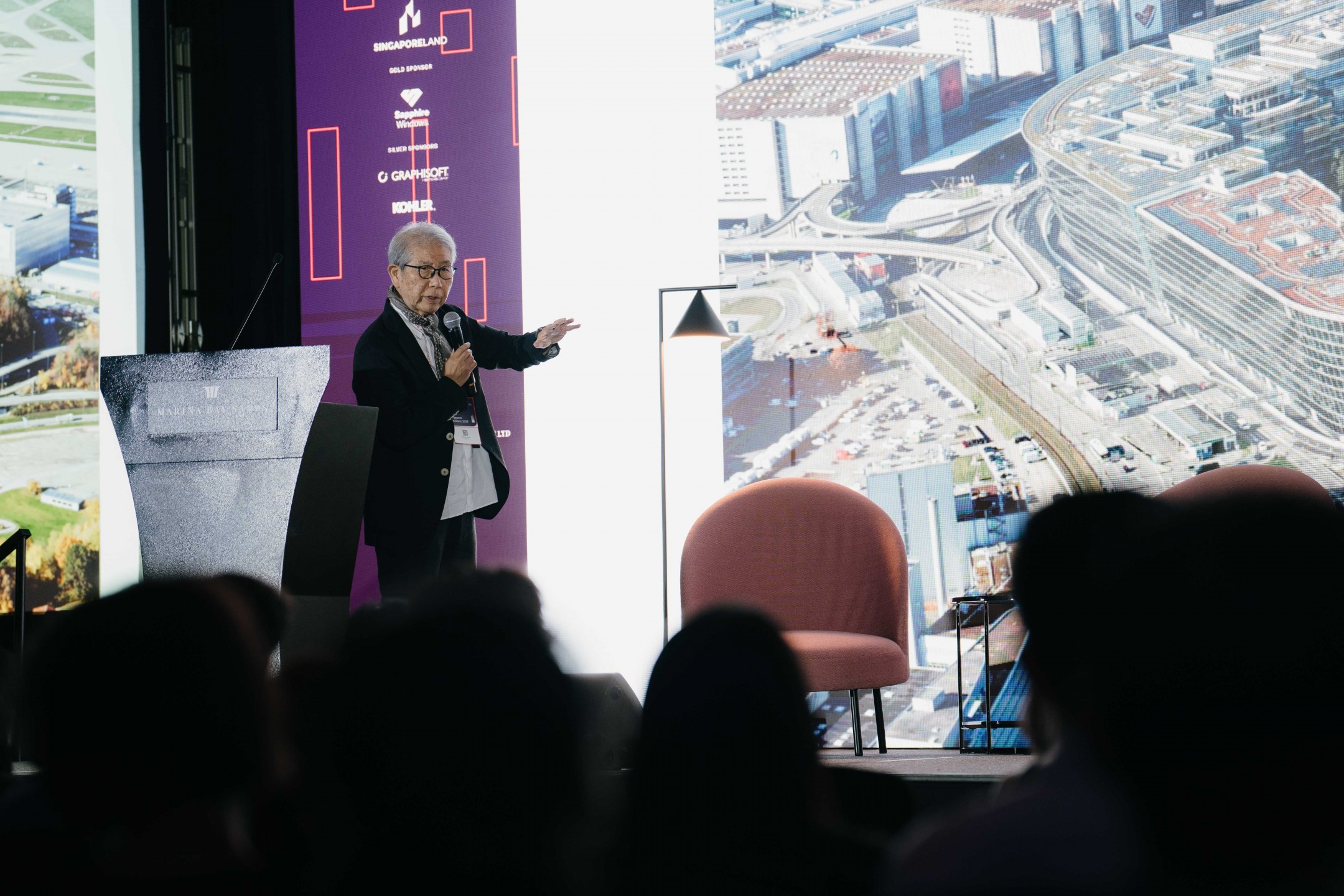
Pritzker Prize laureate Riken Yamamoto takes the stage at Singapore AF Conference 2025, sharing the philosophy behind The Circle at Zurich Airport and his belief in architecture as a vessel for openness, trust, and community. Photo: SIA
Another memorable dialogue came from Grace La and James Dallman of LA DALLMAN, whose reflections on their multifaceted roles—as architects, educators, and civic contributors—embodied the spirit of the festival’s theme. They spoke of architecture not as a fixed discipline, but as a dynamic framework for stewardship, storytelling, and service. Their stories bridged the academic and the real, the theoretical and the tactile, and urged us to consider how architectural thinking can be a tool for social and environmental repair across scales and contexts.
As Tan said with conviction, “The future of architecture lies in going beyond the expected.” And SGAF 2025 is that future—made present.
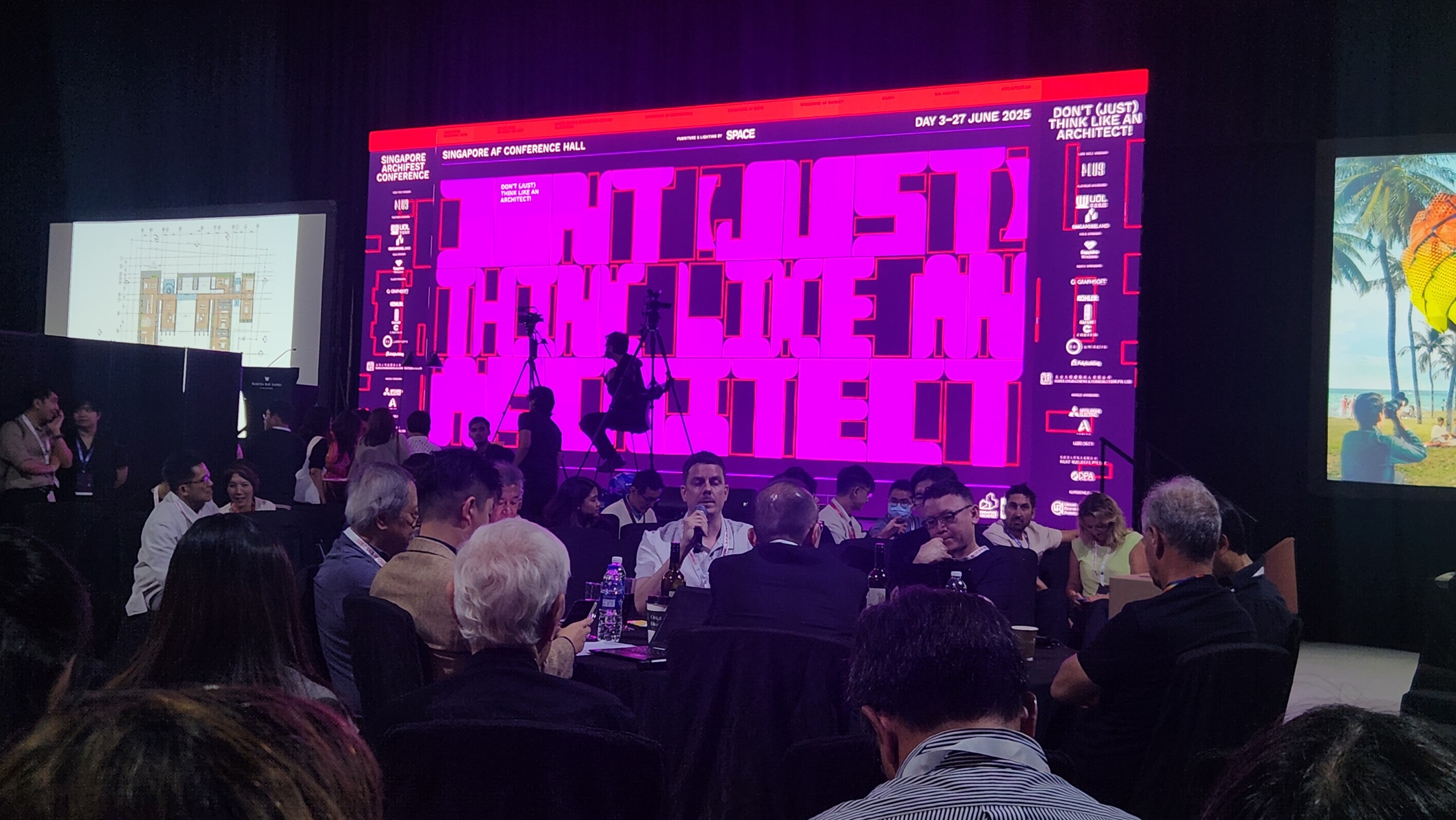
Nearly 100 architects across generations came together for the SG60 Architects Roundtable, an unprecedented conversation on Singapore’s six-decade design journey, unbuilt ideas, and the collective future of the built environment.
A Roundtable for the Ages
But it was Day 3—the SG60 Architects Roundtable—that left the deepest impression.
To witness nearly a hundred architects from across generations, backgrounds, and schools of thought in one charged room, reflecting on Singapore’s 60-year design journey, was nothing short of electric. These were the city’s makers, not just of buildings but of lived legacies. And for the first time, many opened their unbuilt portfolios, revealing design dreams that had never seen the light of day.
There were moments of laughter and tension, provocation and introspection. Young architects challenged the old guard; veterans spoke candidly about policy, failures, and what it truly means to design for life in the tropics. Yet through the mosaic of views, a collective hope emerged: for a Singapore that is not just smart or efficient, but imaginative, inclusive, and deeply humane.
One of the most memorable sharing came from Liu Thai Ker, often referred to as Singapore’s master planner. With characteristic calm and clarity, he recalled a project in which the building’s drawings were reviewed by a geomancer. “He said it had perfect feng shui,” Liu shared with a smile. “I don’t know much about feng shui, but if you design something logical, you would inevitably have good feng shui—wouldn’t you?” His point landed with a ripple of nods and knowing laughter, a gentle but profound reminder that clarity, reason, and empathy in design often align with deeper cultural resonance.
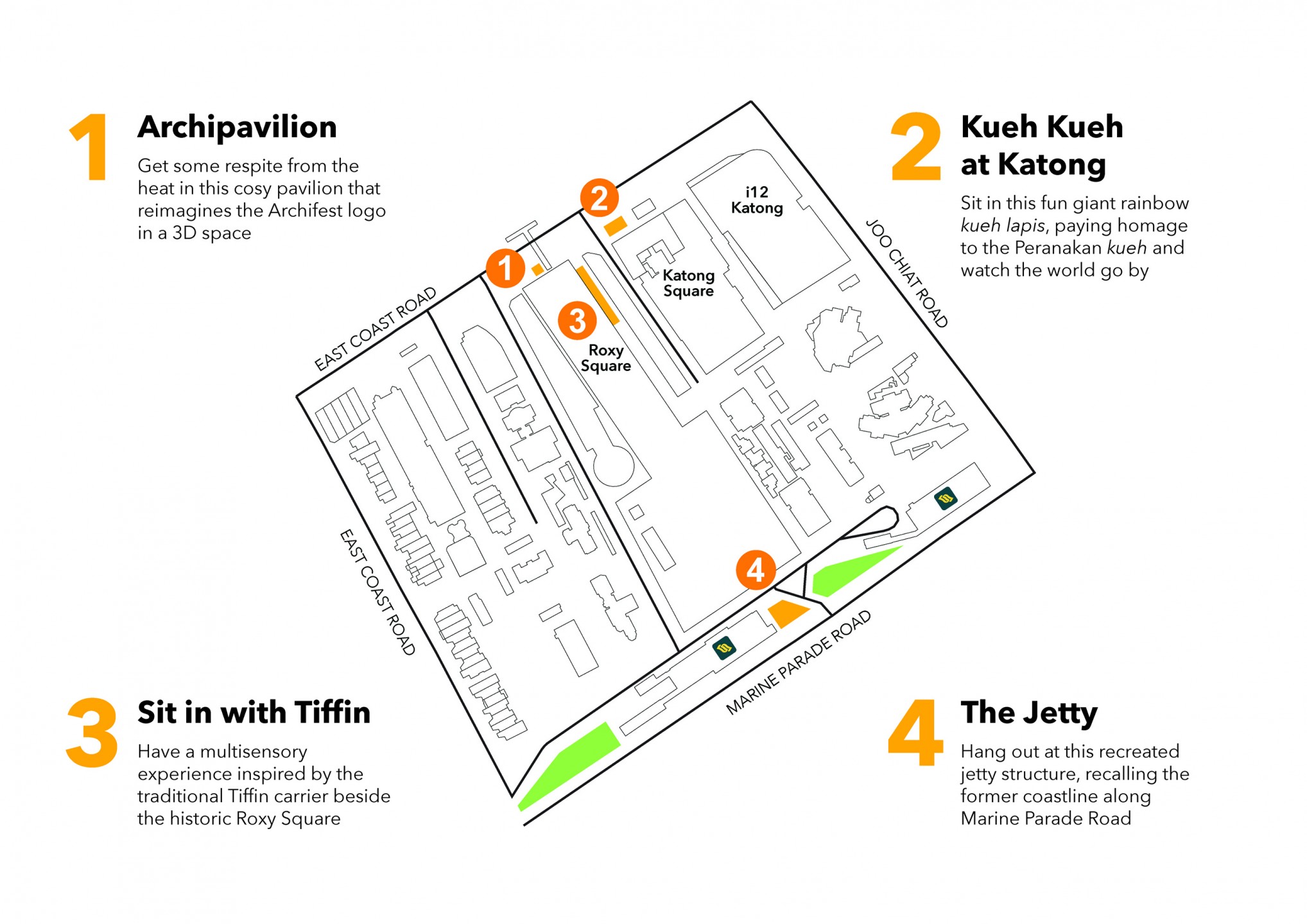
What to Look Forward To
From now until 25 July, SGAF+ takes over the city with tours, installations, exhibitions, and conversations in unexpected places, from heritage trails in Katong-Joo Chiat to playful pavilions made from kueh-inspired forms.
Don’t miss:
- Assembly: Blueprints of Imagination at National Design Centre (2–13 July): A showcase of tomorrow’s talents from nine spatial design schools.
- ArchiTours (5–13 July): Journey into homes, theatres, and campuses with the architects themselves.
- ArchiHouse (12–27 July): A vibrant hub of ideas at 341 Joo Chiat Road, featuring URA’s Historic East Identity Corridor, NUS’s visionary Long Island Exhibition, and the thought-provoking YAL Human Narratives series.
Public installations like The Jetty, Sit in with Tiffin, and Kueh Kueh at Katong transform Katong into a living museum of memory, tactility, and imagination, where form follows flavour and nostalgia becomes structure.

Kueh Kueh at Katong. Photo: SAA Architects
Visit archifest.sg and @singaporearchifest on Instagram to explore the full programme.
Words: Leyna Poh



